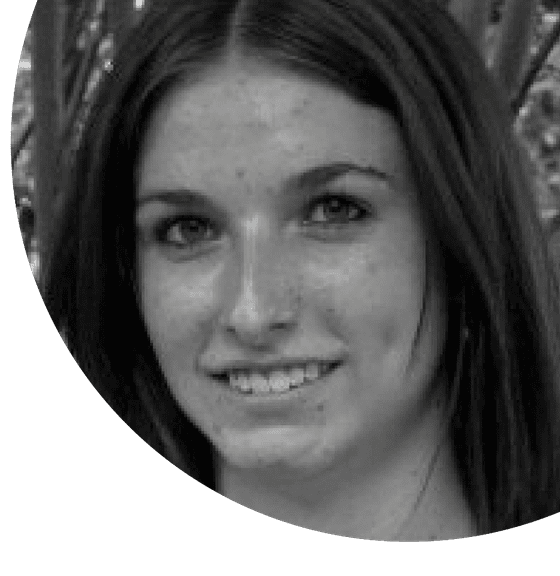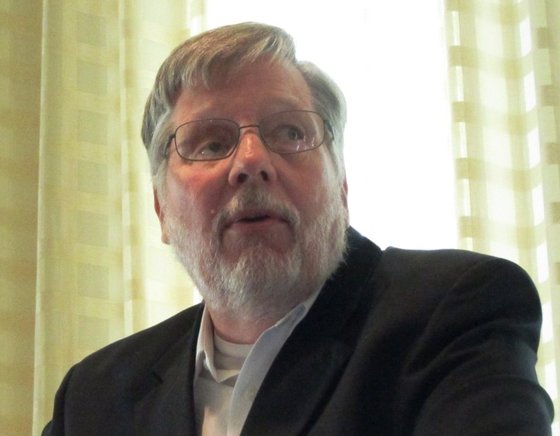KAY BECHTOLD is assistant editor of
The Synergist.
She can be reached at kbechtold@aiha.org or (703) 846-0737.
Editor’s note: The individuals featured in this series were selected from responses to a survey that AIHA conducted in 2014. For background, see "The IH Hero Gap" in the January 2015 issue.
Mike Jayjock got his first taste of industrial hygiene in the early 1970s. He was working as a plastics engineer in Philadelphia, Pa., primarily performing tests on plastics manufactured by Rohm and Haas, a company famous for making Plexiglas. When airline industry workers began to fall ill while cutting Plexiglas, Jayjock was part of the team that identified the problem.
The team discovered that the heat from the sawblade was depolymerizing the Plexiglas and causing monomer to come up into the breathing zones of workers at fairly high concentrations. Improved local exhaust ventilation was the answer to protect the workers from becoming overexposed while cutting Plexiglas. Jayjock was tapped to help examine the processing of Plexiglas and identify other processes that might result in similar emissions.
“That was my introduction to industrial hygiene,” Jayjock says. “Then I got to thinking about exposure limits, which got me interested in [other potential exposures] in a laboratory setting.”
Eventually Jayjock was named industrial hygiene coordinator for Rohm and Haas, which, at the time, allocated only four of his work hours per month to industrial hygiene and worker health and safety issues. Under the mentorship of Paul Snyder, who would later become safety and industrial hygiene director at Rohm and Haas, Jayjock bolstered his knowledge of industrial hygiene, including the human interaction aspects of the job.
“A DREAM OF MINE”
In the late ’70s, the profit margins for plastics were shrinking. Plexiglas, which had been a unique and proprietary product, became more generic, and competitors—both domestic and foreign—entered the field, putting pressure on the price of plastics. With an eye on these developments, Jayjock began taking night classes toward a master’s degree in industrial hygiene at Drexel University in 1979.
Two years later, Jayjock was nearing completion of his master’s when Lester Levin, professor and director of the graduate IH program at Drexel, offered to sponsor him if he was interested in getting a PhD. Jayjock was ecstatic.
“It was a dream of mine,” Jayjock recalls. “To think that that might be able to happen was wonderful.”
Jayjock took a leave of absence from work to fulfill the requirements for his doctorate. He earned his PhD in 1984, and returned to Rohm and Haas as a regulatory specialist, advising the company on regulatory issues and eventually serving as an internal expert on exposure and risk assessment and epidemiology.
“Once I took that first job in the Product Integrity Department, it became very obvious what the needs were regarding exposure and risk assessment in the service of product safety,” Jayjock says. “That is when I became really interested in exposure modeling.”
LINKS
•Departments Home
•Table of Contents
THE PATH TO IH
When Jayjock joined AIHA in 1979, the organization had relatively little activity going on around modeling. From the beginning, Jayjock has been active within the organization’s committees, working to advance the science of risk assessment, particularly with regard to exposure modeling. Working with various committees is one of the highlights of Jayjock’s involvement with AIHA. He describes the energy and dedication of the committee members with admiration.
“I have some really superb colleagues,” he says. “I mean, nobody gets rich doing this stuff, but they are all dedicated to the advancement of the science.”
The first committee Jayjock joined was the Exposure Assessment Strategies Committee, where he was instrumental in the development of an exposure modeling professional development course (PDC). Over time, the PDC developed under the direction of other colleagues into a two-day course that remains popular to this day. He was also a charter member of the Risk Assessment Committee, which was founded by Neil Hawkins, PhD. At Hawkins’ encouragement, Jayjock says, the committee wrote Risk Assessment Principles for the Industrial Hygienist, which was published in 2000. The book won the Third Annual AIHA Press Publications Award of Excellence.
Jayjock continued working for Rohm and Haas during this period, but the company fell on hard times at the turn of the century. By the time Jayjock took early retirement in 2003—the same year he was named an AIHA Fellow—his career at Rohm and Haas had spanned 34 years.
After a few more career moves, including stints as a senior analyst for both a nonprofit and for-profit business, Jayjock started his own consulting company, Jayjock Associates, LLC, in 2010. Jayjock continues to do work with the nonprofit, The LifeLine Group, an organization that works to assess exposure to and the risk and benefits of elements in people's diets and living and work environments.
REACHING OUT
During Jayjock’s first years as a consultant, finding steady work was a challenge. He wasn’t keen on marketing himself in more traditional ways—advertising, for example—but he wanted to get his name out in world. He turned to his former administrative assistant, Linda Burg, for advice.
“Linda, I've had my shingle out for a while now since I left Rohm and Haas,’” Jayjock told her. “I occasionally I get a good project, but there are [less experienced] people out there who get work. Do you have some ideas about how I could market myself using the Internet?”
“It’s pretty simple, Mike,” Linda told him. “Write a blog, and write it consistently. Announce what you’re going to do, and then write it so that it’s of value to the people doing the reading.”
In April 2013 Jayjock launched his blog, “Human Health Risk Assessment to Chemicals,” which connects him with colleagues from all across the globe from his home in the suburbs of Philadelphia. His blog covers a range of topics—from dermal exposure to modeling acute toxicity dose-response to uncertainty factors in OELs—in a genuine, conversational tone, with the goal of facilitating IHs’ involvement in quantitative risk assessment. He published his one-hundredth blog post on March 22, and his blog now receives approximately 3,000 hits per month.
“When I go to [AIHce] and [speak at] a well-attended session, there might be 500 or 600 people there,” Jayjock says. “And if I teach a PDC, there might be 45 at the most. But being able to reach around 900 people a week in a blog is just remarkable.”
TOOLS IN FOCUS
Jayjock is heartened by the changes he has seen during his years in the industrial hygiene profession, particularly the increased focus on IH tools and the substantive advances in the science. He cites the upcoming fourth edition of A Strategy for Assessing and Managing Occupational Exposures as a strong technical base of tools for the working industrial hygienist. And he describes IH MOD, a modeling tool developed alongside the book Mathematical Models for Estimating Occupational Exposure to Chemicals, as a strong, user-friendly tool that “takes the fear of math out of modeling.”
Statistics and statistical analysis is another area where the profession has made great progress, Jayjock says, noting the development of IHSTAT, an Excel spreadsheet tool that helps industrial hygienists to properly use statistical analysis in exposure assessments.
“Early on, the industrial hygiene community had kind of a bad rap of not being very deep technically,” Jayjock says. “The terms ‘pump jockey’ and even ‘pump monkey’ were being used where people thought that the sum and substance of the industrial hygienist was just hanging a pump on a person and analyzing the air around them. But with these various tools and broadening of the scientific background, I think AIHA has come a long way in enhancing the reputation for the IH.”
THE PROFESSIONAL ANCHOR
In 2014, Jayjock received AIHA’s Distinguished Service Award. His nominators described him as “the professional anchor … for much of the progressive risk assessment knowledge base developed within the industrial hygiene profession over the past 20 years.” They refer to his championship of risk assessment as a technical competency of industrial hygiene, and to his extensive involvement on many national science panels representing the “voice of the industrial hygiene professional.”
Jayjock continues to be an active voice in the industrial hygiene community—via his blog, in publications, and in person. When The Synergist spoke to Jayjock, he was preparing to write a new blog post about a topic he never thought he would touch on: the treatment of global warming data and science.
Most recently, Jayjock was part of the Hanford Tank Vapor Assessment Team, which issued a report including recommendations for improving the industrial hygiene programs at the U.S. Department of Energy’s Hanford Site in Richland, Wash., where concerns arose in 2014 when more than two dozen workers received medical attention following exposures to vapors emanating from waste storage tanks or other sources.
In early June, Jayjock will head to Salt Lake City, Utah, for AIHce 2015, where he will present a PDC with colleagues and two platform talks related to one of his current professional passions: the proper development and evolution of occupational exposure limits. For Jayjock, development of health-based OELs is the number one challenge facing industrial hygienists.
“I think we're doing a pretty good job now of measuring and estimating exposures, but it’s critical for us to do a better job on OELs,” Jayjock says. “The lack of data and resources that are put toward OELs cause us—strictly from hunger—to get into these [occupational exposure bands]. My sense is that we need occupational exposure bands because we don't spend the resources that we need to on understanding of the toxicity of materials and setting proper OELs.”



